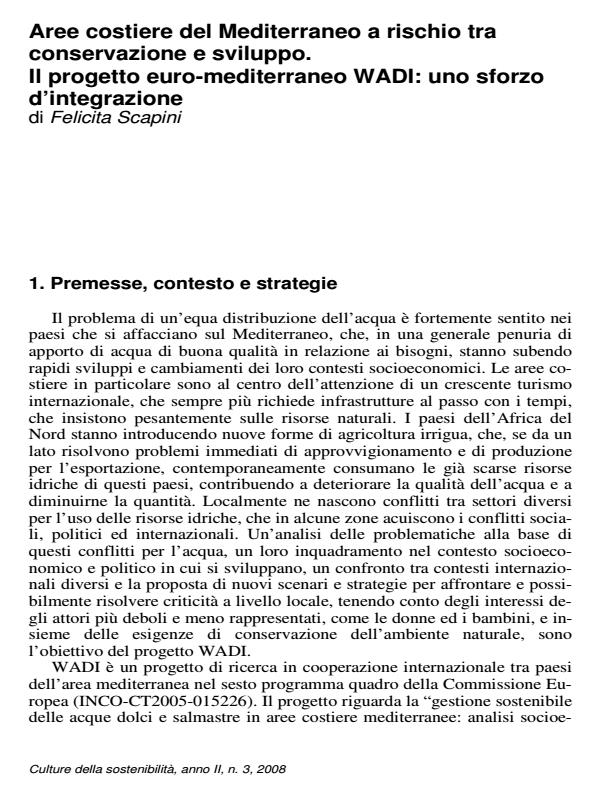Aree costiere del Mediterraneo a rischio tra conservazione e sviluppo. Il progetto euro-mediterraneo WADI: uno sforzo d’integrazione
Titolo Rivista CULTURE DELLA SOSTENIBILITA '
Autori/Curatori Felicita Scapini
Anno di pubblicazione 2008 Fascicolo 2008/3
Lingua Italiano Numero pagine 10 P. 117-126 Dimensione file 106 KB
DOI
Il DOI è il codice a barre della proprietà intellettuale: per saperne di più
clicca qui
Qui sotto puoi vedere in anteprima la prima pagina di questo articolo.
Se questo articolo ti interessa, lo puoi acquistare (e scaricare in formato pdf) seguendo le facili indicazioni per acquistare il download credit. Acquista Download Credits per scaricare questo Articolo in formato PDF

FrancoAngeli è membro della Publishers International Linking Association, Inc (PILA)associazione indipendente e non profit per facilitare (attraverso i servizi tecnologici implementati da CrossRef.org) l’accesso degli studiosi ai contenuti digitali nelle pubblicazioni professionali e scientifiche
Aree costiere del Mediterraneo a rischio tra conservazione e sviluppo. Il progetto euro-mediterraneo WADI: uno sforzo d’integrazione ABSTRACT: Mediterranean coastal areas are subject to ever increasing pressures by urbanization. They share environments of high natural and cultural values, a common heritage of the countries. The scarce fresh water reservoirs in these areas are often subject of conflicts for the use of the natural goods. Rarely a compromise is achieved that takes into account the needs of all the concerned actors, particularly the week components of the local populations and the natural ecosystems. The euro-Mediterranean project WADI (INCO-CT2005-015226, 6th framework programme of the European Commission) has analyzed some complex real cases of water bodies around the Mediterranean with scarce fresh water supply and subject to various pressures, both in the north (Italy and Spain) and south (Egypt, Tunisia and Morocco). We have adopted an integrative and participatory approach and conducted ecological and socioeconomic research, and present here the first results obtained.
Felicita Scapini, Aree costiere del Mediterraneo a rischio tra conservazione e sviluppo. Il progetto euro-mediterraneo WADI: uno sforzo d’integrazione in "CULTURE DELLA SOSTENIBILITA '" 3/2008, pp 117-126, DOI: